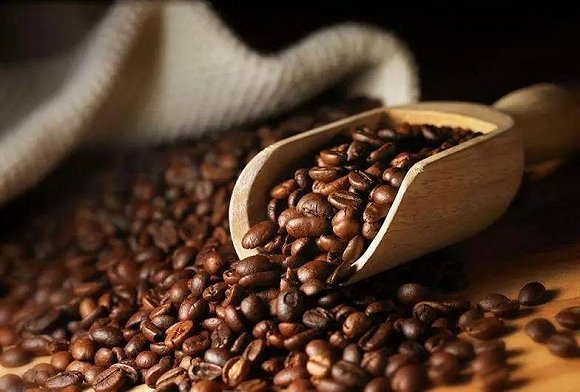Grading, price, raw beans and roasting degree of SHB Kaddura boutique coffee beans in Ireta Manor, Panama

For professional baristas, please follow the coffee workshop (Wechat official account cafe_style)
The main producing areas of Panamanian coffee are:
Bokui Special District (Boquete): the multi-quality coffee produced in this area is the region with the highest coffee production and good quality in Panama.
Volcan: the coffee produced here is characterized by a mild and balanced taste, which has gradually attracted the attention of international experts and coffee lovers, and it is believed that it will soon be on a par with the Boqui Special District.
Santa Clara (Santa Clara): the fertile coffee garden is irrigated with clear river water from Chorerra Falls and the nearby Panama Canal, making it easy to transport fresh and authentic Panamanian coffee to all parts of the world.
Piedra de Candela: the most promising area has the potential to develop high-quality premium coffee.
This batch of coffee has the purest original flavor. Because the coffee washed by SHB in Ireta Manor is extracted from Kaduai coffee beans at high altitude, it has a strong fruit and flower flavor, and its flavor features: bread and cream, almond sweet, sugarcane sweet, round acidity, complex aroma, moderate sweet and sour, pleasant taste.
Kaddura (Caturra), a natural variety of Arabica variety bourbon, was discovered in Brazil in 1937. Its tree is not as tall and shorter as bourbon. Due to inheriting the blood of bourbon, the resistance is relatively weak, but the yield is higher than that of bourbon. Although found in Brazil, Kaddura is not suitable for growing in Brazil, so it is not planted on a large scale in Brazil, but is popular in Central and South America, such as Colombia, Costa Rica and Nicaragua. Kaddura is widely planted in Brazil.
Compared with these botanical characteristics, people may be more concerned about the taste of Kaddura. At the site where Kaddura is planted, the higher the altitude, the higher the quality, but the corresponding yield is also less. When Kaddura is slightly roasted, the sour aroma is obvious and the whole is bright, and the sweetness can be very good with proper treatment, but the mellowness of coffee is relatively low compared with bourbon, and the cleanliness of the taste is a little less.
Kaddura usually has red berries, but there are very few areas with yellow Kaddura, such as Hawaii, where there are very few yellow Kaddura.
At present, the grading system of coffee bean producing areas in the world is not unified, and each coffee producing country has its own grading system and grading name, so you may see the following words on the coffee logo: "SHB", "AA+", "Supremo", "Extra-Fancy", "round bean / adzuki bean", etc., these are the grading names of coffee beans. Roasted cooked beans on the market sometimes mark the grading of individual coffee. The more detailed the grading of coffee, the better the quality of the coffee. But regular coffee is not marked.
The Panamanian Ireta by hand. 15g powder, medium grinding (small Fuji ghost tooth cutter 4 grinding), v60 filter cup, 88-89 degrees water temperature, 30g water injection for the first time, steaming for 27 seconds, water injection to 105g water cut off, wait for the amount of water in the powder bed to reach half and then water injection, slow water injection until 225g water, no water powder ratio at the end, 1:15, extraction time 2:00
Factory name: Qianjie Cafe address: No. 10 Baoqian Street, Yuexiu District, Guangzhou City, manufacturer contact: 020-38364473 ingredients Table: own baking shelf life: 30 net content: 227g Packaging: bulk taste: neutral coffee beans ripe degree: coffee cooked beans contain sugar: sugar-free origin: Panamanian coffee types: other
Panama MC Santa Clara Eleta SHB Washed
Country: Panama
Grade: SHB
Producing area: Santa Clara
Altitude: average 1600 m
Treatment: washing
Located in a small place in the Santa Clara producing area (Santa Clara), one kilometer away from the Costa Rican border and close to La Amistad International Park, the main virgin forest reserve, Cafe de Eleta is an ecological habitat in Central America. Ireta Manor began to acquire land in the 1970s, covering an area of about 130 hectares, initially growing vegetables and animal husbandry, and only in 1995 began growing coffee, named Caf é de Eleta S.A. Continue to expand the land area, until today has been 420 hectares, is one of the large Panamanian coffee farms, but also one of the best Panamanian famous coffee. Due to abundant water resources, there is a private hydropower plant 530KW, in addition to self-sufficient electricity, excess electricity is sold to Distribuci ó n de Electricidad Chiriqu í S.A. Connected to the Internet.
Variety: Kaddura
Manor: Ireta Manor
Flavor: bread and cream, apricot kernel sweet, sour and round
Panamanian coffee is the hottest country in Central America in the past six years. The main reason is that Geisha, a coffee tree grown in Hacienda La Esmeralda, which is run by the Peterson family, makes coffee lovers crazy. Therefore, Geisha is regarded as the top coffee bean in the world, and it is precisely for this reason that the Panamanian coffee winning cup competition is independent of the Central and South American Cup competition. The earliest auction is held in mid-May every year. Panamanian coffee is not only impressive in Geisha varieties, but also constantly updated in the middle of the raw bean treatment process, not only the traditional water treatment, but also the most popular honey treatment in neighboring Costa Rica, and the emerging sun-dried beans in Central America, Panamanian coffee is also produced in small quantities, attracting the attention of coffee people all over the world.
Coffee was introduced into Panama in 1780, when Europeans introduced the first Typica tree species. After that, this mysterious and strange drink conquered the senses of Panamanians, and the local people began to grow it widely. Panamanian coffee is very smooth, full particles, light weight, and perfect acidity balance, its high-quality coffee bean flavor is pure, very distinctive. Because of its popularity, most of Panama's high-quality coffee beans are shipped to France and Finland.
Important Notice :
前街咖啡 FrontStreet Coffee has moved to new addredd:
FrontStreet Coffee Address: 315,Donghua East Road,GuangZhou
Tel:020 38364473
- Prev

SHB Kaddura Fine Coffee Bean, Brand recommendation and Manor of Ireta Manor in Panama
Professional barista exchanges please follow the coffee workshop (Wechat official account cafe_style) Kaddura (Caturra) is a natural variety of Arabica variety bourbon, was found in Brazil in 1937, its tree is not as tall as bourbon, shorter
- Next

Flavor characteristics, producing areas and cooking parameters of SHB Kaddura boutique coffee beans in Ireta Manor, Panama
For the exchange of professional baristas, please follow the coffee workshop (Wechat official account cafe_style) Panamanian coffee is the hottest country in Central America in the last 56 years, mainly because the Peterson family runs the Panamanian Emerald Manor (Hacienda La Esmeralda) grows a coffee tree Geisha makes coffee lovers crazy, so it is presumed that Geisha is the top in the world.
Related
- Does Rose Summer choose Blue, Green or Red? Detailed explanation of Rose Summer Coffee plots and Classification in Panamanian Jade Manor
- What is the difference between the origin, producing area, processing plant, cooperative and manor of coffee beans?
- How fine does the espresso powder fit? how to grind the espresso?
- Sca coffee roasting degree color card coffee roasting degree 8 roasting color values what do you mean?
- The practice of lattes: how to make lattes at home
- Introduction to Indonesian Fine Coffee beans-- Java Coffee producing area of Indonesian Arabica Coffee
- How much will the flavor of light and medium roasted rose summer be expressed? What baking level is rose summer suitable for?
- Introduction to the characteristics of washing, sun-drying or wet-planing coffee commonly used in Mantenin, Indonesia
- Price characteristics of Arabica Coffee Bean Starbucks introduction to Manning Coffee Bean Taste producing area Variety Manor
- What is the authentic Yega flavor? What are the flavor characteristics of the really excellent Yejasuffi coffee beans?

